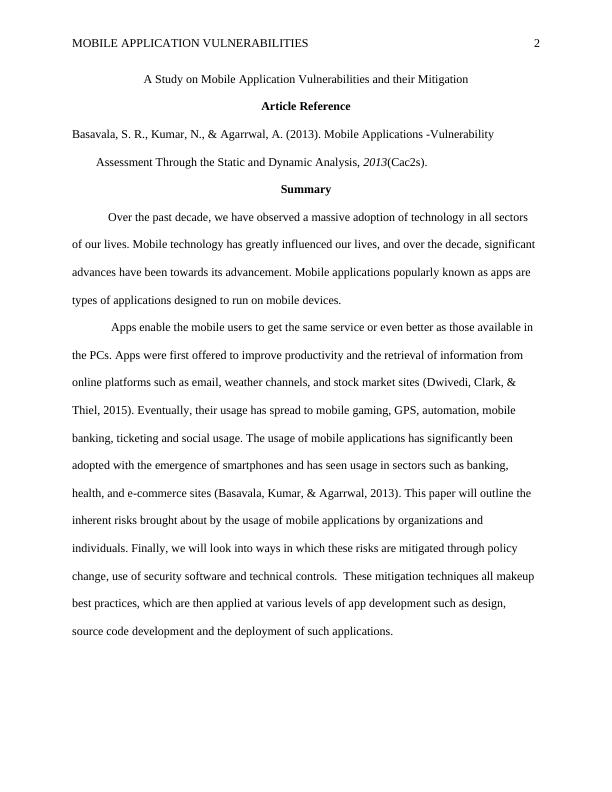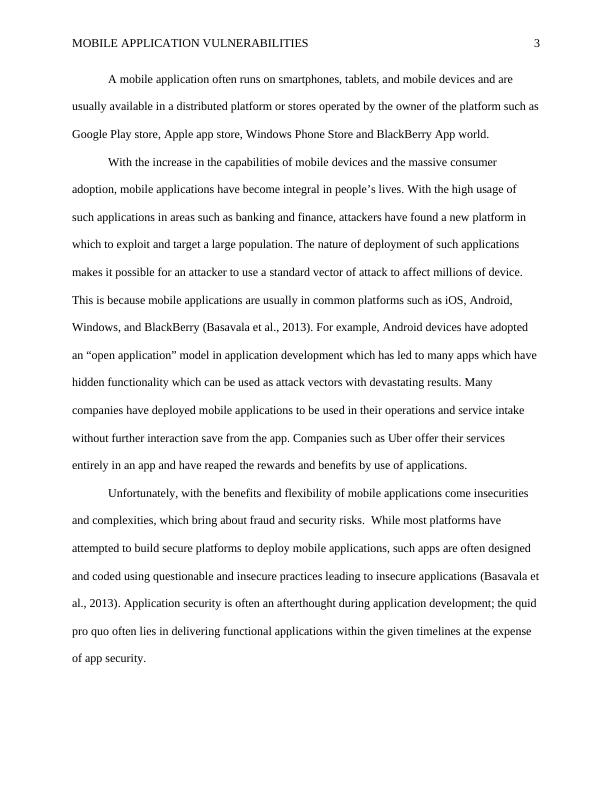A Study on Mobile Application Vulnerabilities and Mobile Application Security Best Practices
This study researched methods for detecting maliciousness in Portable Document Format files (PDFs) in order to expand the knowledge of this area and increase the effectiveness of detecting malicious PDFs.
10 Pages2588 Words407 Views
Added on 2023-06-11
About This Document
This paper outlines the inherent risks brought about by the usage of mobile applications by organizations and individuals. It discusses ways in which these risks are mitigated through policy change, use of security software and technical controls. The paper also suggests best practices to counter the vulnerabilities present in mobile applications.
A Study on Mobile Application Vulnerabilities and Mobile Application Security Best Practices
This study researched methods for detecting maliciousness in Portable Document Format files (PDFs) in order to expand the knowledge of this area and increase the effectiveness of detecting malicious PDFs.
Added on 2023-06-11
ShareRelated Documents
End of preview
Want to access all the pages? Upload your documents or become a member.
Mobile Application Security: Malware Threats and Defenses
|7
|6648
|56
Mobile Application Security: Malware Threats and Defenses
|6
|1508
|435
Mobile Application Development Assignment
|11
|2507
|86
Mobile Application Threat Modeling
|14
|3127
|21
Mobile Security and BlackBerry MDM/MAM Application
|10
|2229
|243
(PDF) Advanced programming language design
|14
|4570
|66



